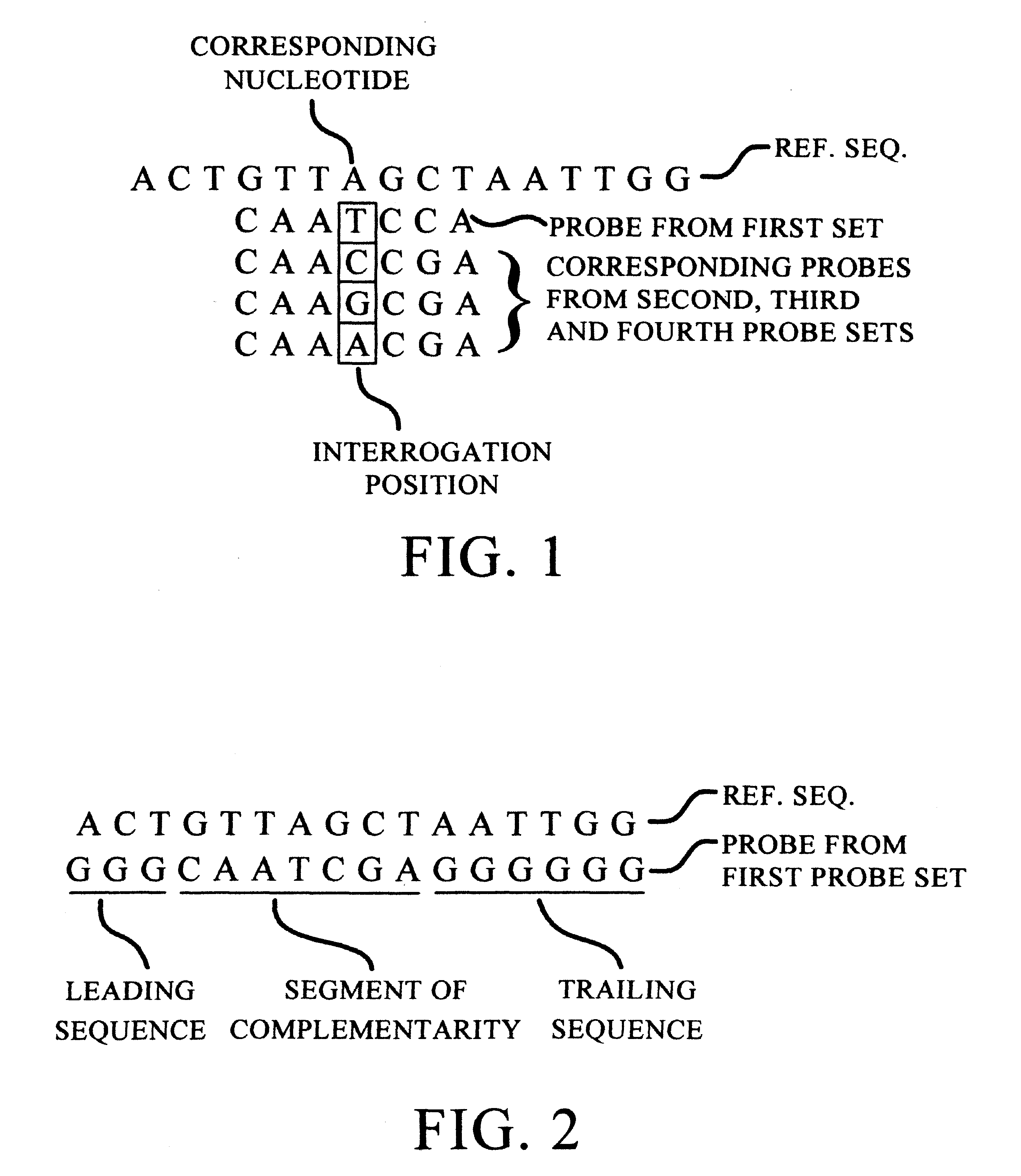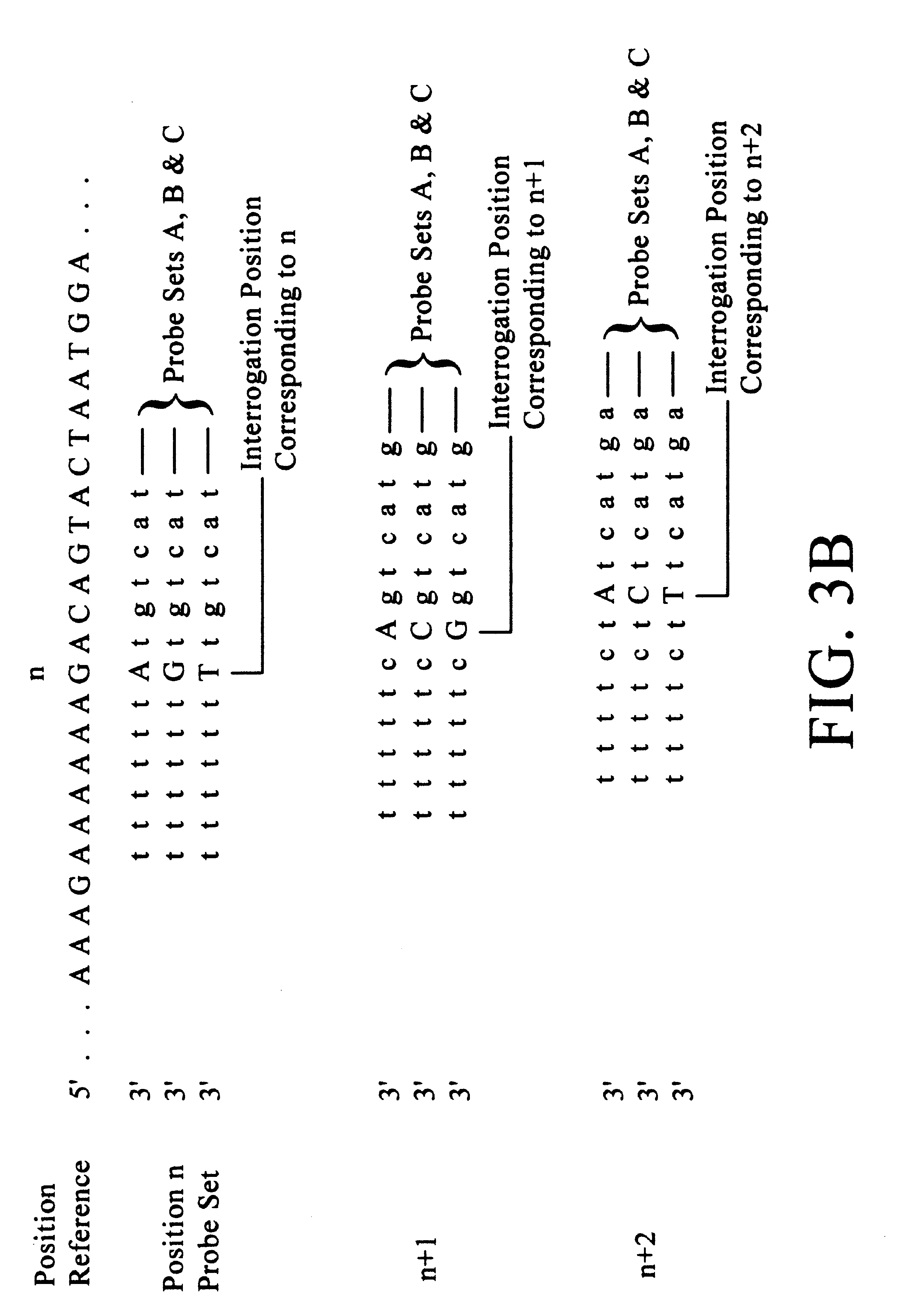Analysis of genetic polymorphisms and gene copy number
- Summary
- Abstract
- Description
- Claims
- Application Information
AI Technical Summary
Problems solved by technology
Method used
Image
Examples
Embodiment Construction
FIG. 10 shows the layout of probes and a computer-simulated hybridization pattern for an exemplary chip containing tilings for CYP2D6 and CYP2Cl9 (wildtype). The chip contains a number of separate tilings as follows.
(1) A tiling (basic strategy) of all 9 exons plus 5 nucleotides of each intron bordering the exons of the CYP2D6 gene. The probes were 14 mers with the interrogation position at nucleotide 7. This tiling is the upper right of the figure (excluding the eleven columns of probe sets on the left of the chip). Each lane of probes is divided into four columns, occupied by probes differing at the interrogation position. At any one column, a nucleotide in the target sequence aligned with the column position is identified as the complement of the nucleotide in the column having the highest fluorescent intensity.
(2) A tiling (basic strategy) of the complete coding sequence (cDNA / mRNA) of CYP2C19 (wildtype). The probes were 15 mers with the interrogation position at nucleotide 7. T...
PUM
| Property | Measurement | Unit |
|---|---|---|
| Crystal polymorphism | aaaaa | aaaaa |
Abstract
Description
Claims
Application Information
 Login to View More
Login to View More - R&D
- Intellectual Property
- Life Sciences
- Materials
- Tech Scout
- Unparalleled Data Quality
- Higher Quality Content
- 60% Fewer Hallucinations
Browse by: Latest US Patents, China's latest patents, Technical Efficacy Thesaurus, Application Domain, Technology Topic, Popular Technical Reports.
© 2025 PatSnap. All rights reserved.Legal|Privacy policy|Modern Slavery Act Transparency Statement|Sitemap|About US| Contact US: help@patsnap.com



